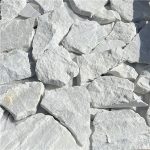Bluestone is a popular choice for outdoor spaces, known for its natural beauty and durability. In recent years, cultured bluestone has emerged as a versatile alternative to traditional bluestone, offering a wide range of benefits and design possibilities. This article aims to delve into the world of cultured bluestone, exploring its characteristics, uses, advantages, and maintenance tips.
**What is Cultured Bluestone?**
Cultured bluestone is a man-made product designed to replicate the look and feel of natural bluestone. It is typically composed of a mix of cement, aggregates, and pigments, molded and shaped to mimic the texture and color variations of natural bluestone. The result is a product that closely resembles the authentic beauty of bluestone while offering additional advantages in terms of consistency and customization.
**Characteristics of Cultured Bluestone**
Cultured bluestone shares many characteristics with natural bluestone, including its distinct blue-gray color palette, natural cleft surface texture, and durability. However, there are some key differences that set cultured bluestone apart:
1. **Consistency**: Cultured bluestone offers a higher level of consistency in terms of color, size, and shape compared to natural bluestone. This makes it easier to achieve a uniform look in your outdoor space.
2. **Customization**: Cultured bluestone can be manufactured in a variety of shapes, sizes, and thicknesses to suit different design preferences. https://www.fs-slate.com allows for more creative freedom in designing outdoor spaces.
3. **Affordability**: Cultured bluestone is often more cost-effective than natural bluestone, making it a budget-friendly option for those looking to achieve the look of bluestone without breaking the bank.
4. **Durability**: Like natural bluestone, cultured bluestone is known for its durability and resistance to wear and tear, making it a long-lasting choice for outdoor applications.
**Uses of Cultured Bluestone**
Cultured bluestone can be used in a variety of outdoor applications, including:
1. **Patios**: Cultured bluestone is a popular choice for patio flooring, offering a sophisticated and timeless look that complements a range of architectural styles.
2. **Walkways**: The natural cleft surface texture of cultured bluestone provides excellent traction, making it a safe and practical choice for walkways and pathways.
3. **Pool Decks**: Cultured bluestone is a great option for pool decks due to its slip-resistant properties and ability to withstand exposure to water and chlorine.
4. **Driveways**: Cultured bluestone can be used to create stunning driveways that enhance the curb appeal of a property while withstanding the weight of vehicles.
5. **Outdoor Kitchen Countertops**: Cultured bluestone countertops are a stylish and durable choice for outdoor kitchens, providing a versatile surface for cooking and entertaining.
**Advantages of Cultured Bluestone**
There are several advantages to choosing cultured bluestone for your outdoor projects:
1. **Versatility**: Cultured bluestone comes in a wide range of shapes, sizes, and colors, allowing for endless design possibilities to suit your aesthetic preferences.
2. **Low Maintenance**: Cultured bluestone requires minimal maintenance to keep it looking its best. Regular cleaning and sealing can help prolong its lifespan and preserve its appearance.
3. **Cost-Effective**: Cultured bluestone is typically more affordable than natural bluestone, making it a cost-effective option for homeowners and builders on a budget.
4. **Consistency**: The uniformity of cultured bluestone ensures a cohesive look in your outdoor space, eliminating the variations that can occur with natural stone.
5. **Durability**: Cultured bluestone is highly durable and resistant to weathering, fading, and scratching, ensuring that your outdoor surfaces will stand the test of time.
**Maintenance Tips for Cultured Bluestone**
To keep your cultured bluestone looking its best, follow these maintenance tips:
1. **Regular Cleaning**: Sweep or rinse your cultured bluestone surfaces regularly to remove dirt, debris, and organic matter that can cause staining and discoloration.
2. **Sealing**: Apply a penetrating sealer to your cultured bluestone periodically to protect it from moisture, stains, and UV damage. Follow the manufacturer's instructions for best results.
3. **Avoid Harsh Chemicals**: Avoid using harsh chemicals or acidic cleaners on your cultured bluestone, as they can damage the surface and affect its appearance.
4. **Preventative Measures**: Use coasters under planters, avoid dragging heavy furniture across the surface, and promptly clean up spills to prevent staining and damage to your cultured bluestone.

5. **Professional Cleaning**: For deep cleaning and maintenance, consider hiring a professional to clean and seal your cultured bluestone surfaces to ensure they remain in top condition.
In conclusion, cultured bluestone offers a versatile and cost-effective alternative to natural bluestone for outdoor projects. With its beauty, durability, and low maintenance requirements, cultured bluestone is a popular choice for patios, walkways, pool decks, driveways, and outdoor kitchen countertops. By understanding the characteristics, uses, advantages, and maintenance tips of cultured bluestone, you can make an informed decision when incorporating this versatile material into your outdoor spaces.
